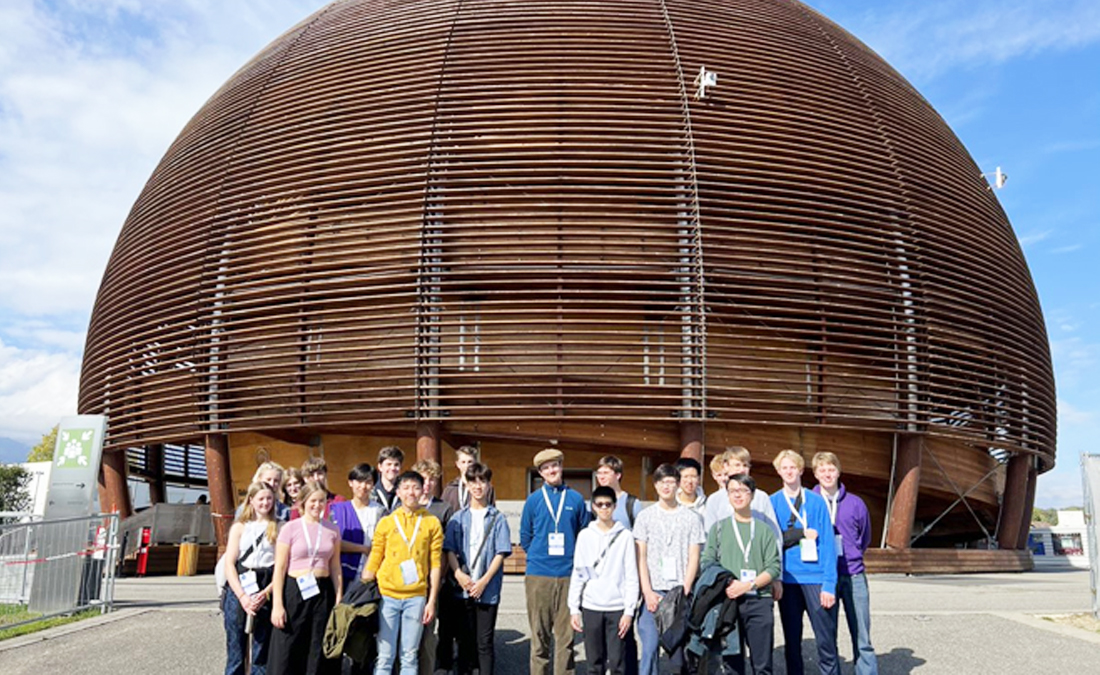
On the 6th October, our A-level Physicists travelled to Geneva to visit CERN. CERN is the European Organization for Nuclear Research and one of the world’s largest and most respected centres for scientific research.
Arriving late on Thursday evening, our visit began in earnest on Friday. The first thing on our schedule was the S’Cool Lab workshops. We developed our knowledge of particle physics, created our own cloud chambers and also investigated superconductivity, working with sample materials and liquid nitrogen. Under the careful eye of highly qualified scientists, we developed our measuring, observation, and teamwork skills. Time went by very quickly, and after three hours of intense work, we happily went for lunch at CERN’s cafeteria, side by side with some of the world’s greatest physics minds.
After a delicious meal, we visited the astonishing Universe of Particles Museum, where we were guided round an exhibition on the history of CERN and its missions. The most interesting part for many was the presentation which explained the purpose of the facility’s research conducted.
After a brief tram journey into the centre of Geneva we visited the History of Science museum, which was simply incredible. We were able to view some of the most important inventions of modern science including an early electron microscope, Volta’s early batteries and Coulomb’s personal electrometer. Afterwards, we absorbed the beauty of Lake Geneva and the Swiss Alps, enjoying a walk along the lake to the city centre, where after some free time we devoted ourselves to a delicious traditional local dinner.
You would have probably thought it was enough to call it a day, but no. We had one more attraction to enjoy, bowling. Divided into groups of 6, alongside the teachers, we stretched our muscles after a day full of mind exercising.
Our last day in Switzerland began, quite similar to the previous one, with breakfast and a tram to CERN. On arrival, there was an amazing guide waiting for us, and after an informative presentation we went on to visit the facilities. Our first stop was the Control Centre – the thriving heart and mind of the whole operation. It was a unique opportunity to see scientists working in real-time. After learning how the LHC works we went to see one of its seven detectors- ALICE (A Large Ion Collider Experiment). We were lucky enough to tour the facility and view the detector before receiving a presentation on its research.
This was a very educational trip which taught us many facts such as, you really can dig deep into an atom, neutrino, and deeper into protons, then quarks, and into the unknown. We also learnt that the power of the human mind is capable of things that for centuries were even unimaginable.
We would like to express our special thanks to Mr. Worsman for organising and leading the whole trip, as well as Mrs. Murphy and Mr. Hicks for taking care of us.
Joszko & Pawel, Lower Sixth